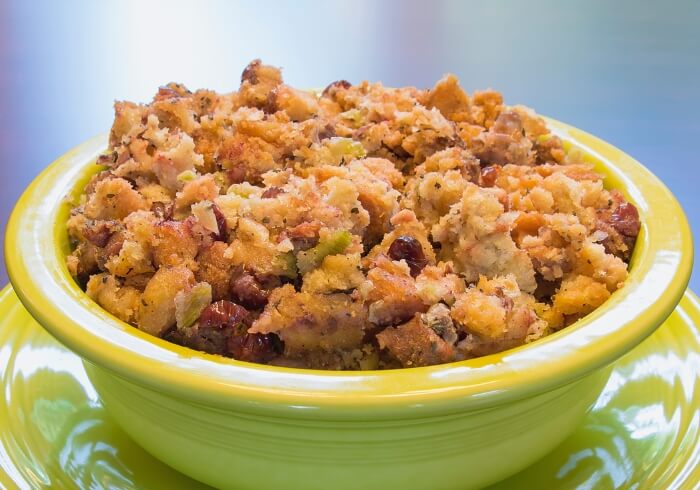If you want to restore leftover lasagna to its original glory, it’s a little more complicated than tossing a square in the microwave. That might work to reheat it in a pinch, but you could end up with a dry chunk at one extreme or a messy pasta explosion at the other.
What is the best way to reheat lasagna?

Whether you use the microwave or the oven, you need to cover the lasagna to retain its moisture but in a way that doesn’t get bits of covering sticking to the cheese.
The magic number for safely reheating lasagna is 165 degrees Fahrenheit. Reaching that temperature takes about six minutes in the microwave or about 30 minutes in the oven at 350 degrees Fahrenheit.
Make a hole out of the center of the lasagna to help distribute the heat evenly, or look out for sizzle and bubbling cheese in the middle. You can keep the moisture intact by covering the dish, but don’t let the cover touch the slice.
Today we’re going to explore the best ways to preserve your lasagna’s texture and taste across various common reheating methods.
Can You Reheat Lasagna?
Although it may be counterintuitive, there’s a case to be made that leftover lasagna can taste better than lasagna fresh out of the oven. Newly-cooked lasagna has just gone through a state change, and it needs about 20 minutes to set.
If you dig into it right away, the newly-fused mixture tends to melt into a soggy mess. Giving your lasagna time will help the flavors marry without each ingredient losing its sense of identity.
Many experts even recommend cooking your lasagna a day early and reheating it. Next-day lasagna holds its shape better and settles into a more cohesive texture that mixes in your mouth instead of on your plate.
Related | What To Serve With Lasagna
That texture is why it’s important to reheat lasagna properly. Many reheating methods don’t distribute heat evenly, and you can’t stir lasagna to prevent cold pockets or keep it from drying out.
The below reheating guides will give you a few tricks to recreate that fresh feeling for any type of leftover lasagna, including:
- Lasagna Bolognese
- Ravioli lasagna
- Regular lasagna
- Vegetarian/vegan lasagna
How Long To Reheat Lasagna
According to the USDA’s leftover food safety guidelines, every part should hit at least 165 °F when reheating lasagna. This makes sure to annihilate any contaminating colonies of bacteria that could cause foodborne illnesses.
Here’s about how long you need to reheat the lasagna to reach that temperature using various common methods:
- Reheating in the microwave – about six minutes in 90-second increments
- Reheating in the oven – about 30 minutes at 350°F
Microwaves are notorious for leaving frozen pockets in otherwise hot dishes, and many ovens also bake unevenly due to poor circulation.
Don’t have a thermometer? You can cut down on uneven reheating by cutting a hole of lasagna out of the middle of each slice and putting it on the side of your plate.
Since the center of the dish is usually the kryptonite to microwave superpowers and uneven ovens, scooping out a hole about the size of a quarter and putting it to the side can help distribute those 165 important degrees across every part of the serving.
An apple corer with a tube shape will make the least mess, but a sharp knife and a fork will also work.
Safe and successful reheating starts with proper storage. Always keep your lasagna in a sealed container in the fridge to make sure all its flavors stay intact and no harmful foreign contaminants get in.
If you make your lasagna with poultry or red meat, don’t let it sit at room temperature for any more than two hours.
Only reuse your lasagna once. Drastic, repeated temperature changes plus time can jumpstart bacterial outbreaks that can cause serious health problems. It’s better to only reheat what you’re going to eat.
For extra-juicy next-day lasagna, save some of your sauce in a separate container in the fridge. Before you reheat the lasagna, scoop some of the sauce on top to fill in any areas that may have dried out overnight.
If you’re reheating frozen lasagna, you’ll need to add about 10 minutes to your oven reheating time or put the frozen slice in the microwave for five minutes using the Defrost setting.
It’s best to freeze individual slices of lasagna separately so you can defrost them separately. That way you’ll be able to reheat only what you’re going to eat, and you won’t have to spend time hacking away at the frozen chunk to separate a single slice.
How To Reheat Lasagna in the Microwave
The microwave is the king of convenience. If you have one, there’s no quicker or easier way to reheat your lasagna.
The one problem with microwaving lasagna is that it can pop and speckle your microwave walls with splatters of sauce and pasta.
Here’s a little trick we found that can cut down on microwave splatter. You just need a toothpick and a paper towel.
What You Need
- 1 Microwave-safe dish
- 2 Tablespoons of water
- 1 Toothpick
- 1 Paper towel
- 1 Oven mitt
Reheating Directions
- Start with a microwave-safe dish that won’t melt or spark. We recommend reheating one slice at a time, but if you need two or three, make sure they don’t touch each other.
- Sprinkle a couple of tablespoons of water lightly over the lasagna. This will help prevent dry, crusty edges.
- Jab a toothpick into the middle of the slice, leaving a couple of inches peeking out. You’ll use this like a tent pole to elevate your paper towel tent over the sticky cheese.
- Set up your paper towel tent over the lasagna. If possible, with the sides draped over the edges of the plate and the toothpick holding it up in the middle, no part of the paper towel should touch the lasagna. This should keep the popping and crackling to a minimum and keep your microwave walls lasagna-free.
- Heat up the slice in increments of 90 seconds at full power. It will take around five or six minutes total to reach the safe zone of 165 degrees, but checking the slice every 90 seconds will keep it from overheating and exploding.
- Use an oven mitt to take it out of the microwave.
- Let it rest for about a minute before eating to make sure the heat gets distributed evenly around the slice.
How To Reheat Lasagna in the Oven
The oven recreates the lasagna’s natural habitat and makes sure it feels at home throughout the reheating process. In other words, reheating in the oven is a safer bet to keep the lasagna’s original consistency and taste.
Oven reheating is also better if you need more than one slice or even the whole casserole. It does take five or six times as long as microwave reheating, not counting preheating time, so only jump in if you have half an hour or more free.
What You Need
- 1 Oven-safe dish
- Aluminum foil
- 1 Toothpick
- 1 Oven mitt
Reheating Directions
- Set your oven to 350°F and leave it to preheat. A higher temperature will heat the lasagna faster, but too much heat can suck out the moisture and leave the pasta dry and crusty.
- Put your cold lasagna in an oven-safe dish. This gentle reheating method doesn’t need any extra water. You can keep the lasagna’s original moisture intact by wrapping your oven-safe dish in aluminum foil. Use the toothpick trick from the above microwave section if you need extra clearance to keep the foil from sticking to the food.
- Leave the lasagna to linger in the oven for at least half an hour. If you have a thermometer handy, you can use it to make sure the center has reached the critical 165-degree threshold. If not, you can estimate the temperature by looking for uniformly-melted cheese and listening for a sizzle in the middle.
- If you’re reheating a lot of lasagna, you may need to cut it in half to allow the heat to penetrate more quickly and easily into every part.
How To Defrost Frozen Leftover Lasagna
The best way to defrost frozen lasagna is to put it in the refrigerator the night before you need it. A night in the fridge will let the temperature come down gradually, which is safer and uses less energy.
The downside to this method is that the pasta will tend to absorb the liquid as it slowly unfreezes, and you may end up with dry lasagna. To fix this, add a little bit of extra water or sauce before using one of the above reheating methods.
If you need it right away and don’t have a night to spare for defrosting, use your microwave’s Defrost setting. A few minutes on Defrost will melt the ice, and then you can use your preferred reheating style.
Final Thoughts
The magic number for safely reheating lasagna is 165 degrees Fahrenheit. Reaching that temperature takes about six minutes in the microwave or about 30 minutes in the oven at 350 degrees Fahrenheit.
Make a hole out of the center of the lasagna to help distribute the heat evenly, or look out for sizzle and bubbling cheese in the middle. You can keep the moisture intact by covering the dish, but don’t let the cover touch the slice.











